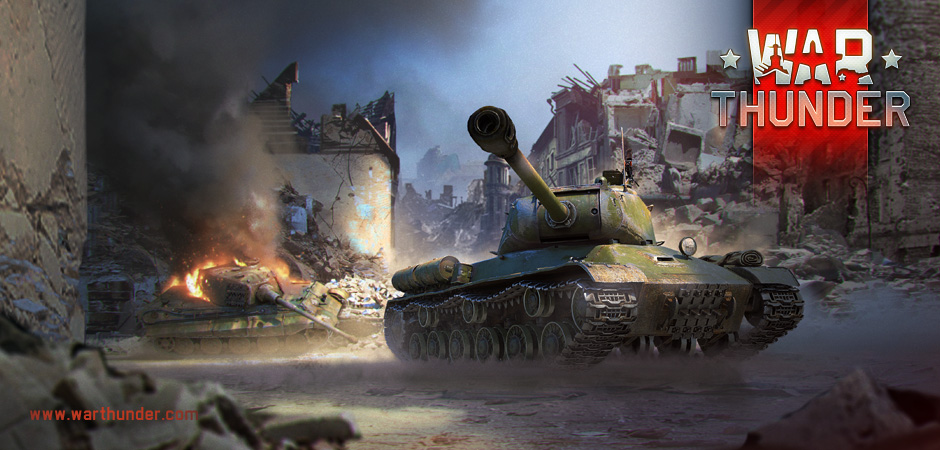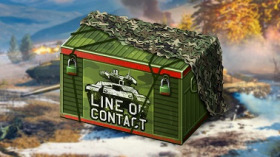
- For PC
- For MAC
- For Linux
- OS: Windows 10 (64 bit)
- Processor: Dual-Core 2.2 GHz
- Memory: 4GB
- Video Card: DirectX 11 level video card: AMD Radeon 77XX / NVIDIA GeForce GTX 660. The minimum supported resolution for the game is 720p.
- Network: Broadband Internet connection
- Hard Drive: 23.1 GB (Minimal client)
- OS: Windows 10/11 (64 bit)
- Processor: Intel Core i5 or Ryzen 5 3600 and better
- Memory: 16 GB and more
- Video Card: DirectX 11 level video card or higher and drivers: Nvidia GeForce 1060 and higher, Radeon RX 570 and higher
- Network: Broadband Internet connection
- Hard Drive: 75.9 GB (Full client)
- OS: Mac OS Big Sur 11.0 or newer
- Processor: Core i5, minimum 2.2GHz (Intel Xeon is not supported)
- Memory: 6 GB
- Video Card: Intel Iris Pro 5200 (Mac), or analog from AMD/Nvidia for Mac. Minimum supported resolution for the game is 720p with Metal support.
- Network: Broadband Internet connection
- Hard Drive: 22.1 GB (Minimal client)
- OS: Mac OS Big Sur 11.0 or newer
- Processor: Core i7 (Intel Xeon is not supported)
- Memory: 8 GB
- Video Card: Radeon Vega II or higher with Metal support.
- Network: Broadband Internet connection
- Hard Drive: 62.2 GB (Full client)
- OS: Most modern 64bit Linux distributions
- Processor: Dual-Core 2.4 GHz
- Memory: 4 GB
- Video Card: NVIDIA 660 with latest proprietary drivers (not older than 6 months) / similar AMD with latest proprietary drivers (not older than 6 months; the minimum supported resolution for the game is 720p) with Vulkan support.
- Network: Broadband Internet connection
- Hard Drive: 22.1 GB (Minimal client)
- OS: Ubuntu 20.04 64bit
- Processor: Intel Core i7
- Memory: 16 GB
- Video Card: NVIDIA 1060 with latest proprietary drivers (not older than 6 months) / similar AMD (Radeon RX 570) with latest proprietary drivers (not older than 6 months) with Vulkan support.
- Network: Broadband Internet connection
- Hard Drive: 62.2 GB (Full client)
 1280x1024 | 1920x1080 | 2560x1440
1280x1024 | 1920x1080 | 2560x1440
From 15.00 GMT on the 27th of May until 07.00 GMT on the 30th of May
Take part in Tank Duels whilst driving the Tiger II and IS-2
on the location “Berlin” (available in the event)!
Tankers profile Icons!
Awards:
|
|
- 5x back-ups for German and USSR ground vehicles of ranks II - IV
- A Random 10-75%
 or
or  Booster
Booster - A Random 10-75% discount for one of the German or USSR premium ground vehicles (except vehicles which were added in 1.57);
- A Unique tanker profile icon!
You are guaranteed to receive the main prize (a unique tanker profile icon) once you complete all three stages for a nation of your choice (or both of them).
Terms:
- Tasks can be completed only in special events which are available in the Events and Tournaments Tab.
- Location: AB/RB/SB “On the streets of Berlin”
- You can follow your progress in your profile -> Achievements -> Tank duels.
- You can complete the tasks only whilst driving Tiger II (H), Tiger II (H) Sla.16, Tiger II (P); and IS-2, IS-2 “Revenge”, IS-2 1944.
Tasks (can be completed only in the special event) :
.png) Whilst driving IS-2, IS-2 “Revenge”, IS-2 1944, destroy 30, 60, 100 enemy German ground vehicles (3 stages) on the location “Berlin”;
Whilst driving IS-2, IS-2 “Revenge”, IS-2 1944, destroy 30, 60, 100 enemy German ground vehicles (3 stages) on the location “Berlin”;
 Whilst driving Tiger II (H), Tiger II (H) Sla.16, Tiger II (P), destroy 30, 60, 100 enemy Soviet ground vehicles (3 stages) on the location “Berlin”;
Whilst driving Tiger II (H), Tiger II (H) Sla.16, Tiger II (P), destroy 30, 60, 100 enemy Soviet ground vehicles (3 stages) on the location “Berlin”;
In Realistic and Simulator modes, a player needs to destroy half as many enemy vehicles.
War Thunder: IS-2 vs Tiger II
 1280x1024 | 1920x1080 | 2560x1440
1280x1024 | 1920x1080 | 2560x1440
The Panzerkampfwagen VI “Tiger I” was, undoubtedly, the most advanced tank of those created in the first half of World War II. After Germany commenced it's advance through the Soviet Union, the Germans realized that despite the advantages of the Pz.Kpfw. III and Pz.Kpfw. IV vehicles such as visibility, ergonomics and quality of manufacturing, they had nothing that could compete with the heavily armoured KV tanks. The Germans needed a heavy tank that could reliably destroy any Soviet competitors and was capable of pushing its way through any defensive formations. Two leading manufacturers presented their projects for tender: “Henschel & Sohn AG” and “Porsche AG”. Ferdinand Porsche was so sure that his prototype would be chosen after the tests, that he ordered production to start on the chassisbefore the tests had even started. But German generals and Hitler himself gave preference to the “Henschel” design, noticing how positively its Schachtellaufwerk suspension influenced the accuracy in motion and the vehicle’s cross-country performance. However, the Porsche turret was used for the new tank, and the unused chassis were adopted to create the heavy “Ferdinand” tank destroyer.
 |
By the middle of the 1942 it became obvious that even the “Tiger’s” abilities were not enough for the prolonged war on the Eastern front. The very same design bureaus presented their heavy tank projects codenamed VK 4502(P) and VK 4502(H) for a new tender, Erwin Anders’ creation came out victorious again. The Panzerkampfwagen VI Ausf. B “Tiger II” or “King Tiger” was produced in two main modifications: with a streamlined “Porsche” turret and with Anders’s turret, notable for its 180mm thick armour plate. Its main weapon was the 8,8 cm Pak 43 (StuK 43) gun. Until the end of the war the Allies never managed to create a mass produced fighting vehicle capable of withstanding its AP shell hit.
 |
The USSR engineers were going neck and neck with the Germans, but did not try to create expensive state of the art war machines, focusing on simple and easy to reproduce designs instead. In the early 1943 the high command set a task to create a new vehicle based on the existing KV-1 and KV-13. The work was in full swing when the Soviet military experts managed to examine some of the “Tigers” captured during the Kursk battle and reported that none of the existing tank guns could reliably penetrate its frontal armour. It turned out that the new tank needed a more powerful gun, so the designers had to rework the turret, change the vehicle’s internal composition, add an additional wheel. The IS-1 received a new 85mm D-5T gun and the IS-2 that reached mass production one year later was equipped with a massive 122mm D-25T gun. Both tanks played a major role in the battles of the last two year of the war, particularly shining in the city assault operations.
After the end of the WW2 the IS series continued its evolution. Two models reached production: the IS-3 and the IS-4. The first one was notable for its unusual yet rational armouring; three 110mm armour plates joined in a star formation with optimal angles and a flattened turret made it almost impossible to penetrate the tank from the front. The IS-4 had a more conventional design; it used more thick armour, but this change reduced its power-to-weight ratio and harmed the tank’s reliability.
The War Thunder team






Comments (51)
come on gaijin, wtf? the tiger II isn't available to play, any of them, and even some of the is-2 are blocked as well, do things right before putting them live, 3 years of beta and still doing worng stuff.
I feel the same way dude
Havent been able to take out a single tiger 2, and also havent met anyone who did... great event, rly...
Russian version of even graphic. https://static.warthunder.ru/upload/image/!2016/March/is_2_1944_vs_pz_VI_ausf_B_tiger_IIh_2560x1140_logo_ru_212d5951e576916036c84798d444c638.jpg
Seems like it happens every time a similar event takes place. Marketing is so marketing.
Umm did you click on "read the full article"? The Russian one is there.
I bet you wont see Russians screaming "Ah IVAN WHY IT SHOW IS-2 BURNT DOWN FIRST?" .....but if the first image was of a knocked out tiger ,the whole German fanboy army would be moaning...
Actually I bet you would, given how patriotic russians can be. And I bet US players would be too if it would become a standard. That's why not few events have different pictures for the russian community. Even I noticed when I began with this game that the pictures showed 90% of the time soviet gear prevailing. Meanwhile they seem to have switched this to at least always present two pictures were everyone comes out as victor on one. Apparently they wanted to be more attractive to german players.
We are unable to spawn with any of the Tiger IIs, in RB mode. It says : Vehicle left on your team : 0 whilst nobody took it.
Another poorly designed event. In AB there is tiger2 vs tiger2, and in RB you can't take Tiger2 or IS2 out.
Fail! Thought this was a Tiger 2 vs IS-2 event, but instead you can play with any other tank (go figure why). Not even going to play it.
I'm unable to track progress in achievements tab, the tank duels tab simply isn't there. Also, you can only spawn the normal IS-2. The Mod. 1944 and Revenge are unspawnable, they are always depleted.
I would like to suggest making these German tanker images as historically accurate as possible. The grey Panzer tunic with black collar tabs and pips instead of the real (not in any way nazi-related) skulls make this look dangerously close to Waffen-SS tankers, something Gaijin surely likes to avoid.
You are splitting hairs now man. Also, anyone who sees an image, but is wrong about it, than is upset (BUT again WAS WRONG) himself, I dont feel bad for. Gaijin has enough to worry about, not to mention something that is "close to the SS tankers logo" who even knows what those look like 10% of us? And of those...who would be offended, that plays this game? 1 person? pfffft.
BS event. Going back to Overwatch, War Thunder isn't worth my time and money.
This is russian bias. IS-2 can be spawned immidiately but KT cant.
Submit a complaint